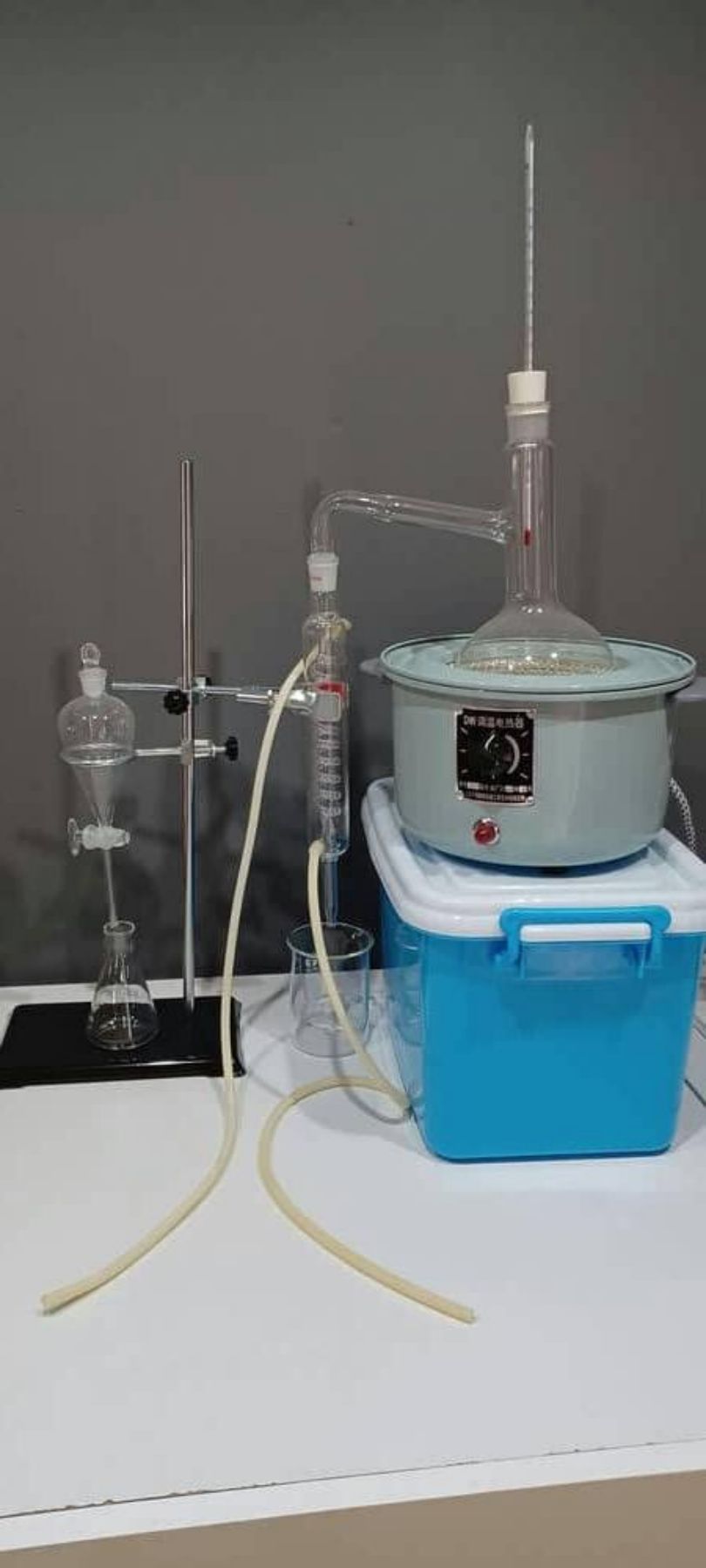Distillation
The distilling apparatus you see on the cabinet is called an "alembic". Distillation is the best-known method. Here's how it works: you start by putting water in the large flask, along with the material you want to smell good. Then light the fire. For safety reasons, electricity is used here, but in the past, wood was often used to heat the water.
The water will boil and turn into fragrant steam, as it has taken on the scent of the raw material you have chosen. The steam rises and goes into the little "coil" next to it. Inside the envelope of this little "spaghetti" there's a vacuum in which cold water circulates continuously. The pipe on the left is connected to the cold water so that the steam turns into liquid. The right-hand pipe is used to discharge the water. The steam that has turned to liquid falls into the little pot you see at the bottom. You now have water with the scent of what you put in the balloon, but there's far too much water - the fragrance is very light, very diluted!
To concentrate this fragrant liquid, we're going to remove the water. We'll pour the jar into the ampoule you see here on the left, called an "Ampoule à décanter". The oily part will float to the top of the liquid and the more liquid part to the bottom. We open the little glass tap you see on the ampoule. We let the water-like part flow out. This is the least interesting part. Close the tap when you get to the part that looks like oil. These are the essential oils, the most beautiful part that we'll use to make the perfume.
Contrary to popular belief, you can't get essential oils from all materials! So people who "play" at home with essential oils to create a beautiful, complex perfume are exceedingly limited!
Look for QR-Code 14, on the left
